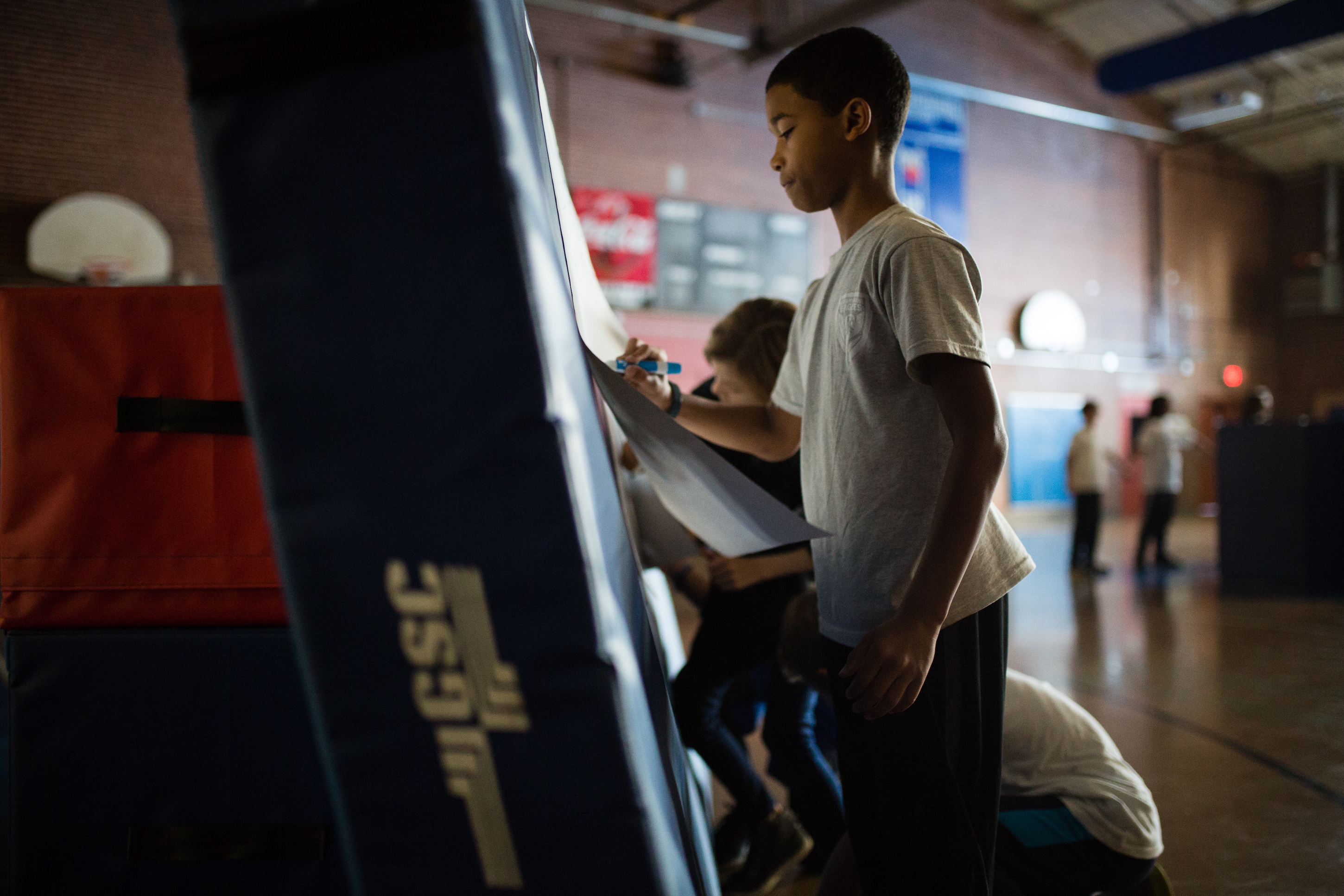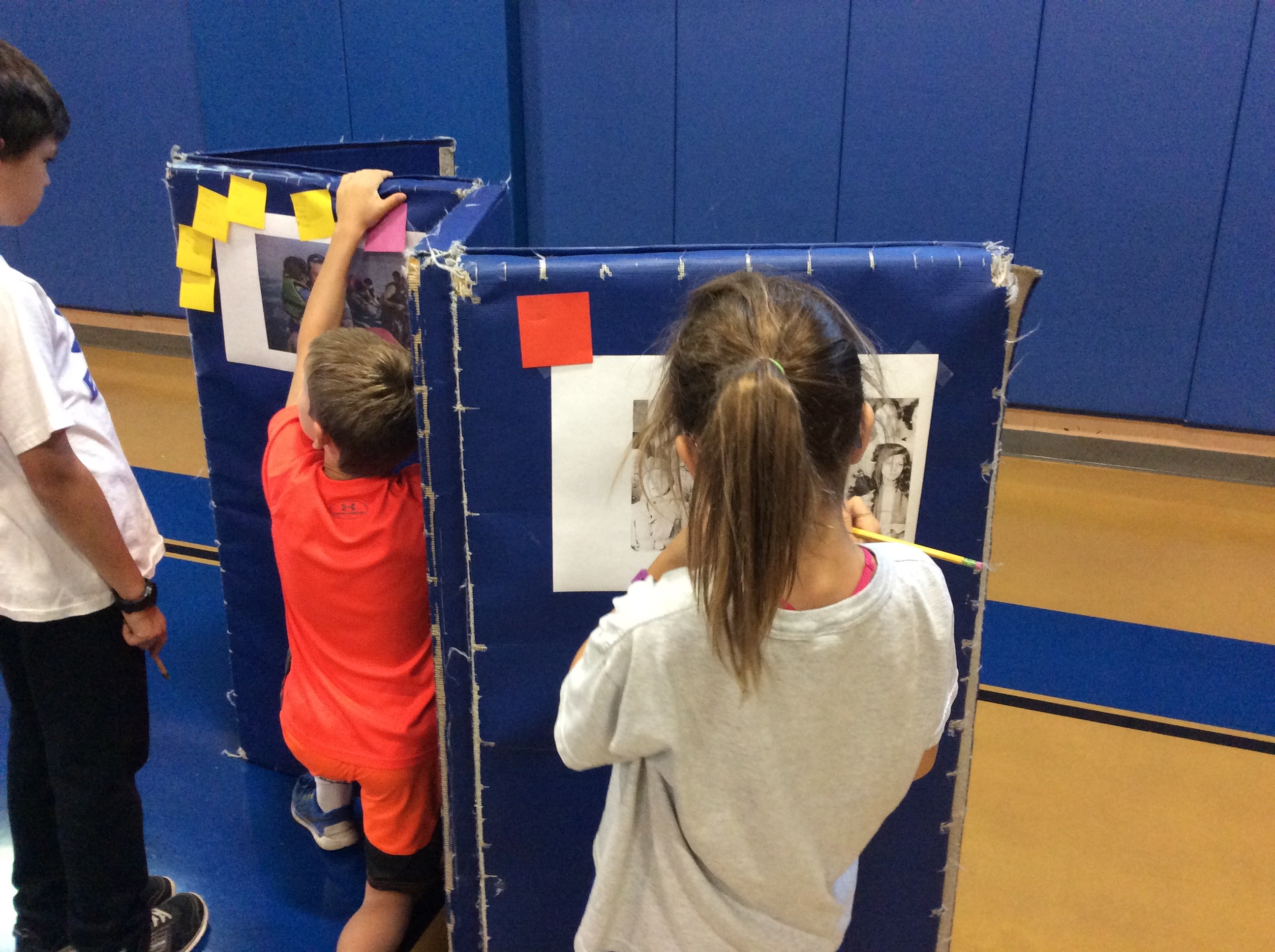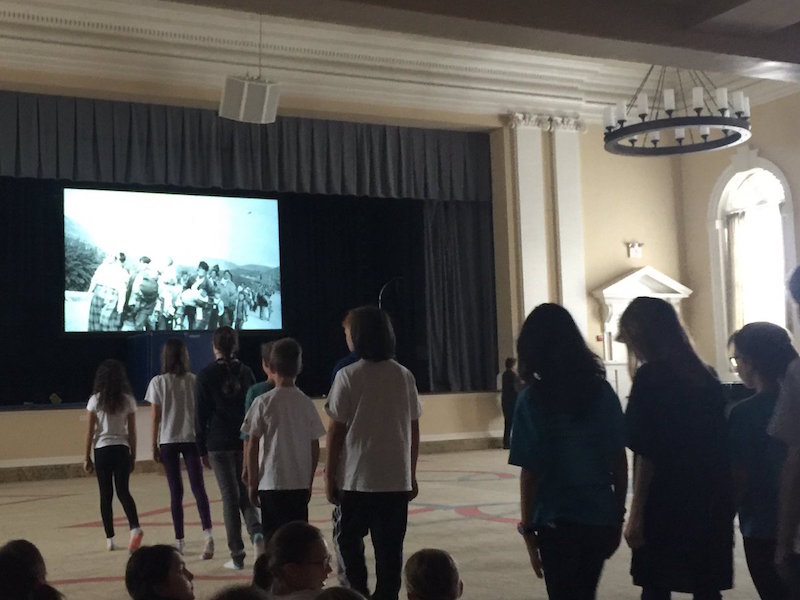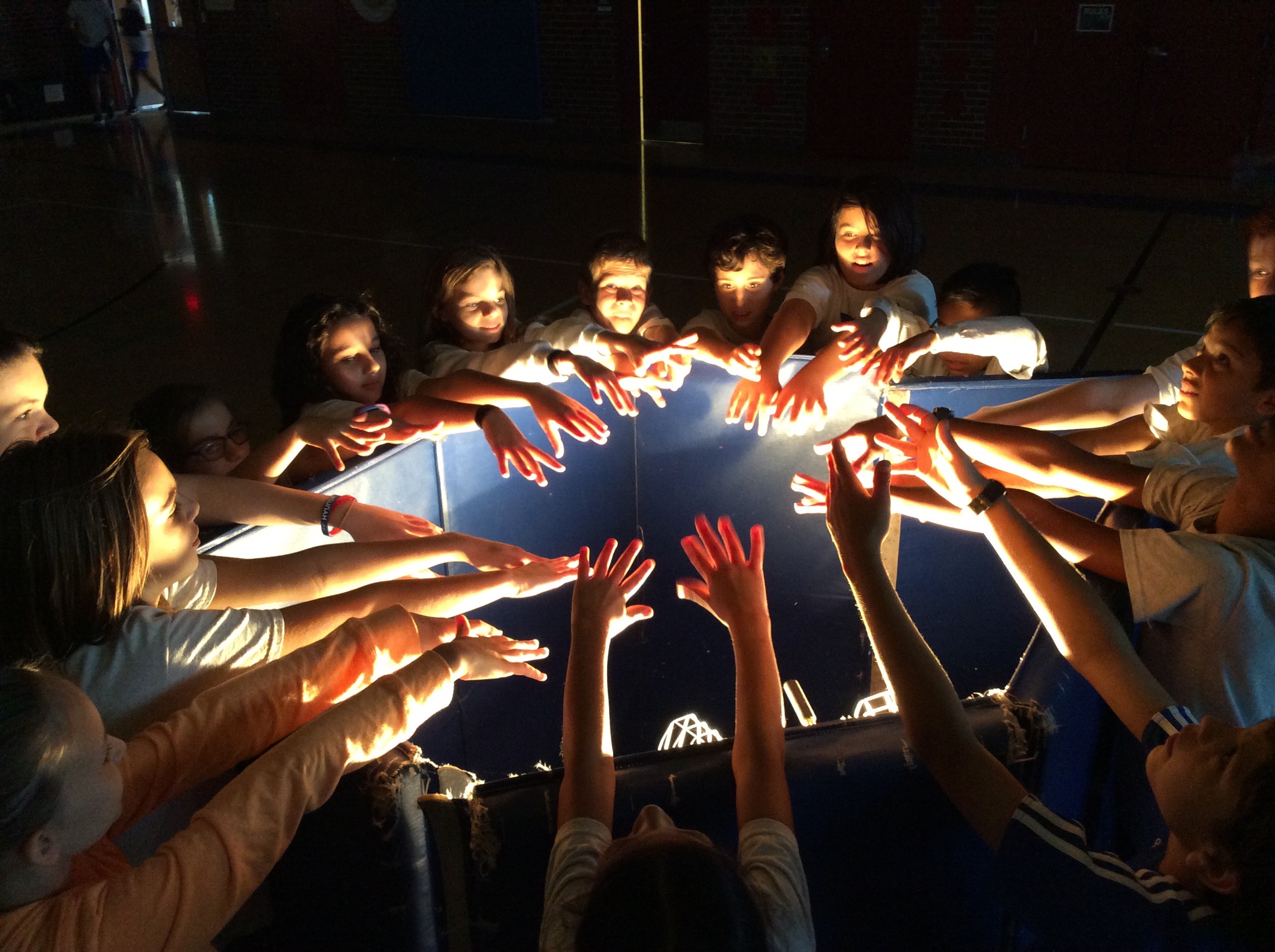
Thomas Courcoux, primary PE teacher, Atlanta International School, USA
This article demonstrates how the development of thinking skills can help build a bridge between subjects such as physical education and social studies. Through a contemporary dance approach, the author supports students’ creativity and leads them to express their understanding of the unit ‘Sharing the planet’ in a meaningful way.
In physical education (PE) class, we have been using a number of thinking routines to increase engagement and deepen the student’s understanding of a unit of inquiry. Through an overview of my 5th grade during a contemporary dance unit, students discovered how their thinking in PE can be a source of inspiration in order to create their shapes and moves connected to the unit of inquiry Sharing the planet. PE became an integral part of a transdisciplinary learning journey thus building a bridge between classroom teachers and specialists.
With my 5th grade in dance, I wanted them to have a physical experience that goes beyond reproducing shapes, steps and moves. I want them to see their body as a way to express themselves, and therefore I felt that a contemporary dance fits this aim. However, when you tell students and teachers that this dance unit will be based on a contemporary approach, it does not always excite them! How can we reach this goal without taking the risk of having our students becoming unmotivated or blocked? How can the unit of inquiry be a source of inspiration for their dance, and how can the dance lead them to a better understanding about the central idea?
We have been using thinking routines, to help students have ownership of their work, so that they confidently discuss, choose and create their own moves in contemporary dance. This leads them to uncover deeper thinking and express themselves in a meaningful way using their own body.

The central idea for the Sharing the planet unit is “Human migration is a response to challenges, risks, and opportunities”. This unit has been introduced by the classroom teachers through thinking activities using migration pictures displayed in the hallway. In coordination with the classroom teachers, we agreed that in order to get the maximum benefit of this introduction and develop students’ transfer skills, it would be beneficial to use the same thinking routines in PE. So I created a similar gallery in the gym by placing different migrations pictures on gym mats. I asked my students to take post-it notes and move around this gallery to take notes of all the words that were coming to their minds. I used a “I See, Think, Wonder…” routine from Harvard Project Zero, which my students were already familiar with.

Next, my students shared in small groups the words, questions and ideas they came up with. I asked them to keep only four words, so they collectively debated on which words they wanted to keep, which helped them strengthen their collaboration skills.
The following step was to ask my students to create three shapes and one move, each expressing one of the four words. To achieve that, I asked my students to use another thinking routine, “Step inside”, which invited them to “step inside the shoes of a migrant”.


Besides this on-going work in small groups, we came up with the idea of reproducing a migration in the gym. My students stepped in the shoes of a migrant and started to walk slowly around the gym, following each other. This migration walk was the common thread of the 8-minute choreography, and the body shapes and moves were the points of understanding that my students wanted to highlight through this dance unit.

My students performed this dance two times in front of the school community. During the questions and answers session that followed, it was amazing to see how they were able to explain their choices by connecting with their understanding about the central idea. When a grade one student asked “why were you covering your eyes or mouths?”, the fifth grade students connected these body shapes with their understanding about how being a migrant leads to some tough situations we do not want to see, and how you may not have the right to raise your voice.

At the end of the unit, and to reflect on their understanding about the contemporary dance approach in PE, I invited my students to use the thinking routine “I used to think…Now I think…”. I split my whiteboard in two parts, one for “I used to think…” and the second one for “Now I think…”. With two post-it notes, each student wrote their perspectives about contemporary dance before and after this unit. By looking closely at the post-its, the students could realize how their thinking about body expression has shifted. They were more inclined to explore the body as a way to express themselves.
This unit has been inspiring for both students and teachers and brought a rich perspective regarding the role of PE within a transdisciplinary programme. The contemporary approach of the dance, as well as the student agency and the use of thinking routines seem to be some of the key points that led to a successful project.
References:
Harvard Project Zero, from Harvard Graduate School of Education: http://www.pz.harvard.edu/
Creativity routines: Step Inside: Perceive, Know, Care about: A routine for getting inside perspectives
Ritchhart, R, Church, M, & Morrison, K (2011). Making Thinking Visible: How to Promote Engagement, Understanding, and Independence for All Learners
Thomas Courcoux is a French citizen, currently PE teacher at Atlanta International School. He has held several positions in France, India and now in the USA. He holds an ‘agrégation’ in physical education and a bachelor’s in physical education from the University of Rennes-Brittany. He also holds a Master’s of Learning Sciences, Comparative and International Education from the University of Paris-Descartes and has developed a high interest in curriculum comparisons. Thomas enjoys exploring teaching approaches that go beyond teaching physical skills, looking at the student in a holistic approach. You can follow him on Twitter @TomCcx.

Inspired! Will share this tomorrow with the PE teacher in the school where I’m teaching a professional development course on thinking strategies and routines tomorrow.
This is amazing — I’m sharing this with my TK-8 staff.
I am the VP of dance for our state organization in Louisiana. I came across your research integrating dance into Physical Education. This is a piece of LAHPERD we are trying to improve. We are currently looking for presenters for our state conference in November 2021. Would you have any recommendations?